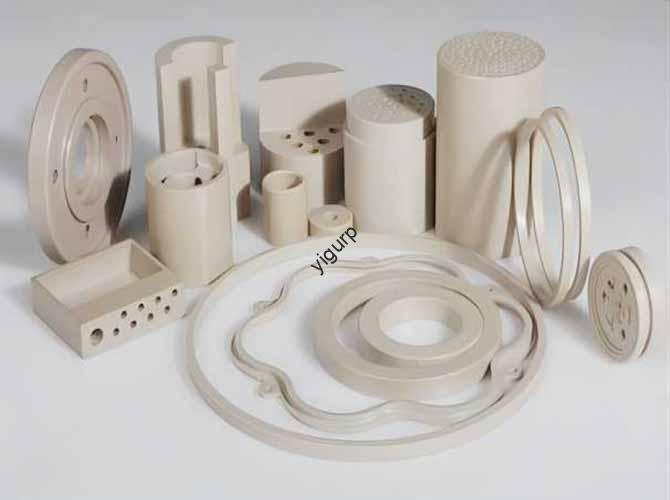Ever found yourself stuck in product development—waiting weeks for a prototype, overspending on materials, or struggling to test complex designs? 3D printing solid prototypes are the solution. These physical, fully formed models transform how teams validate designs, cortar custos, e acelerar o tempo até o mercado. Abaixo, we break down their core benefits, Usos do mundo real, step-by-step production, and how to avoid common pitfalls.
1. Benefícios centrais: Why 3D Printing Solid Prototypes Beat Traditional Methods
O que faz 3D printing solid prototypes a game-changer? The table below compares them to traditional prototyping (Usinagem CNC, manual making) to highlight clear advantages:
| Benefit Category | 3D Printing Solid Prototypes | Prototipagem tradicional (CNC/Manual) |
| Velocidade de produção | 1–3 days for complex designs (Por exemplo, peças automotivas) | 2–4 weeks for the same complexity |
| Eficiência de custos | 50–70% lower material waste; no tooling fees | 20–30% material waste; expensive tooling ($500+) |
| Flexibilidade do projeto | Handles internal cavities, detalhes finos (0.1mm precisão) | Lutas com formas intrincadas; limitado por ferramentas |
| Repetibilidade | Resultados consistentes (± 0,05 mm de tolerância) across batches | Variability from manual labor or tool wear |
| Small-Batch Suitability | Ideal for 1–100 units; no setup cost increases | Costly for small runs (tooling fees don’t scale) |
2. Principais aplicações: Solving Problems Across Industries
3D printing solid prototypes aren’t just for “testing”—they solve unique challenges in three critical sectors:
UM. Design Industrial (Automotive/Aerospace)
Engineers need to validate part fit and function before mass production. Por exemplo:
- An automotive team used 3D printing solid prototypes to test a new engine bracket design. Traditional CNC would have taken 3 semanas e \(2,000 in tooling—3D printing delivered 5 protótipos em 2 dias para \)300 total.
- Resultado: They identified a stress point early, evitando um $50,000 recall later.
B. Eletrônica de consumo
Brands prioritize ergonomics and user experience. A smartphone maker:
- Impresso 10 solid prototypes of a new phone case (using SLA technology) to test grip and button placement.
- Used feedback to adjust the case’s curve—reducing user hand fatigue by 30% (per user testing).
C. Educação
Teachers struggle to make complex concepts tangible. A university:
- 3D printed solid prototypes of human bones and gear systems for engineering/biology classes.
- Student comprehension scores improved by 45% (vs.. textbook-only learning), as students could touch and disassemble models.
3. Step-by-Step Production Process: How to Make a 3D Printed Solid Prototype
Criando um 3D printed solid prototype is straightforward—follow this linear, actionable workflow:
- 3D Modelagem: Use software (SolidWorks, Fusão 360) to design a digital model. Focus on:
- Adding clear dimensions (Por exemplo, “100mm length, 5mm wall thickness”).
- Marking support structures for overhangs (angles >45° need support).
- Tech & Seleção de material: Choose based on your needs:
| 3D Printing Tech | Melhor para | Materiais utilizados |
| SLA (Estereolitmicromografia) | Detalhes finos (Por exemplo, joia, eletrônica) | Resinas (ABS, flexível) |
| Fdm (Modelagem de deposição fundida) | Durable parts (Por exemplo, Suportes) | PLA, Petg, nylon |
| SLS (Sinterização seletiva a laser) | Peças resistentes ao calor (Por exemplo, Componentes do motor) | Poliamida (nylon), glass-filled composites |
- Impressão & Pós-processamento:
- Upload the model to the printer, set parameters (altura da camada: 0.1–0.2mm), e comece a imprimir.
- Após a impressão: Remover suportes, sand the surface (para suavidade), and paint if needed (Por exemplo, for visual prototypes).
4. Common Pitfalls & How to Avoid Them
Even great 3D printing solid prototypes can fail—here’s how to fix top issues:
| Pitfall | Causa | Solução |
| Weak part structure | Paredes finas (<1milímetros) or lack of support | Increase wall thickness to 1.5–2mm; add support for overhangs >45° |
| Acabamento superficial áspero | High layer height (>0.2milímetros) | Use 0.1mm layer height; sand with 400-grit sandpaper post-print |
| Dimensional inaccuracies | Printer calibration issues | Calibrate the printer’s bed level and filament flow before printing |
5. Perspectiva da tecnologia YIGU
Na tecnologia Yigu, nós vemos 3D printing solid prototypes as the backbone of fast, smart product development. We’ve helped clients cut prototyping time by 60% using our optimized SLA/FDM printers and high-performance materials (Por exemplo, heat-resistant resins for industrial parts). We also offer custom workflows—for example, a medical client used our SLS service to print biocompatible prototypes, accelerating their device’s FDA approval by 3 meses. Para nós, it’s not just about printing parts—it’s about helping you solve problems faster.
Perguntas frequentes
- What’s the maximum size of a 3D printed solid prototype?
Most desktop printers handle up to 300x300x300mm. Para peças maiores (Por exemplo, Bumpers automotivos), we use industrial printers (1000x1000x1000mm) or print in sections, depois monte.
- How long do 3D printed solid prototypes last?
Depende do material: PLA prototypes last 6–12 months (good for testing), while nylon/SLS prototypes last 2–3 years (suitable for long-term use).
- Can 3D printed solid prototypes be used for functional testing (Por exemplo, Testes de estresse)?
Yes—choose durable materials like nylon or PETG. Por exemplo, a nylon prototype can withstand 500+ cycles of bending (simulating real use) sem quebrar.
